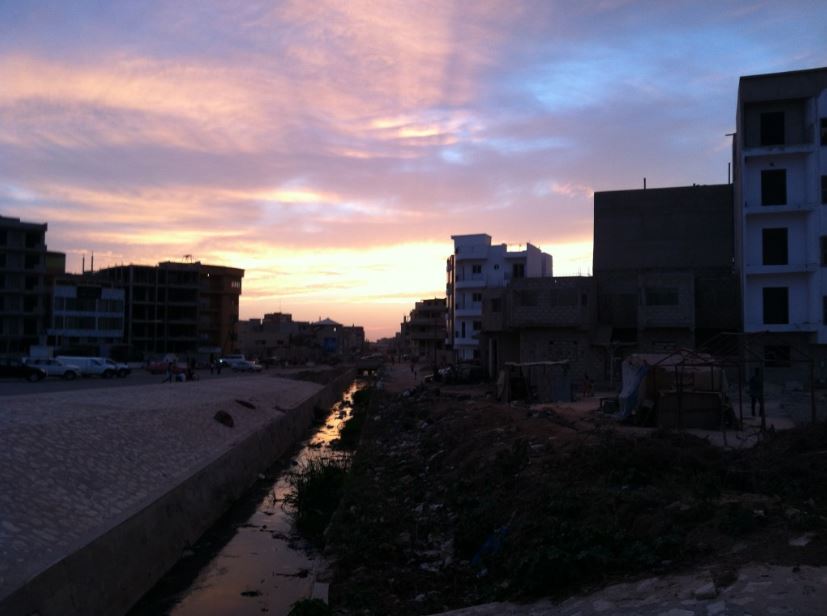Creating change is a hard, slow process. Creating organizational change may be even harder as it involves people, attitudes, and the work environment. Early planning for my summer internship with Peace Corps Senegal had me slotted to analyze the organization’s current Monitoring, Reporting and Evaluation (MRE) practices and processes. This was to be a two month project followed by other equally intensive deliverables such as developing trainings for an upcoming behavior change summit.
Soon into my MRE research I began seeing trends in what was working or not, and developing recommendations to address specific issue-areas. I often ended my long days of research in rural Senegal with a local tea (read: beer) and a book. My book of choice was SWITCH by Dan and Chip Heath as I was preparing for my upcoming work with behavior change. Though Peace Corps’ priorities shifted, and I did not end up working on the behavior change summit, behavior change was integral to my work, and I hope that it will become the long long-term impact of my summer in Senegal.
The Heath brothers craft a convincing and clear path to create change. They argue that to change someone’s behavior, you must reach both the rational side (The Rider) and the emotional side (The Elephant), and you must clear the way to success (Shape the Path). The recommendations that I developed and presented to Peace Corps Senegal were largely influenced by this SWITCH framework. Here are some examples, written to match the SWITCH outline:
Direct the Rider:
Follow the Bright Spots: My research investigated what is working and recommended ways to repeat it. I identified bright spots as specific as a particular handout in a training to the entire overhaul of the electronic reporting system.
Point to the Destination: I also made recommendations to promote a clear understanding of why we must perform high-quality MRE. Misperceptions led PCVs to believe it was all for Congress, when really it’s about learning, organizational growth, and just plain good development.
Motivate the Elephant:
Grow your People: Perhaps my most ambitious (and contentious) recommendation was for Peace Corps Senegal to create a new culture around MRE, and in doing so to move away from what I called “Old School” Peace Corps. Meanwhile the “New School” culture should be cultivated as an identity among volunteers and staff. New School culture prioritizes development first and foremost, and knows that development follows evidence-based practices, becoming increasingly effective through high-quality MRE. Old School Peace Corps prioritizes cultural exchange and resents the evidence-based framework as “too prescriptive.”
Shrink the Change: Many volunteers believed that MRE was demanding and time-consuming. Frankly, the information and tools available to assist volunteers in collecting and reporting high-quality data were dense, full of jargon, and/or not available or accessible. Thus, several recommendations addressed the need to make data collection and reporting easier for volunteers. Simplifying the project frameworks and creating MRE guides and tools will help shrink the change to a manageable state that no longer overwhelms the volunteer.
Shape the Path:
Tweak the Environment: Two of the most common challenges among volunteers were “knowing what data to collect” and “knowing how to collect that data.” One recommendation to address this (which was already underway) was to create data collection tools to take this decision out of the hands of the volunteer. Providing a data collection template for each activity a Peace Corps Senegal volunteer may perform provides explicit instruction on what data to collect and how to collect it.

Peace Corps Senegal is well on its way to performing high-quality MRE. After submitting my final report to the Director of Programming, I presented its recommendations to senior staff the following week. During the presentation, the Director informed the room that she had already spoken with Peace Corps headquarters about the report and that several of my primary recommendations were already underway. The following week I overheard two staff members discussing “measurable outcomes” and also saw that MRE was woven into every presentation at a volunteer pre-service training.
I’ll conclude with a quick summary in the language of MRE. Using inputs (time and Crook Fellowship), I completed the output (research and report). I am now seeing outcomes (Peace Corps staff implementing recommendations), but will have to wait to see the impact (high-quality MRE from volunteers, organizational learning and growth).


One reply on “Creating Organizational Change at Peace Corps Senegal”
Great work, Peter! I’d be curious to hear more about how “Old School” can really be a part of “New School” as well, like through qualitative data collection and things like collecting success stories. Was there any discussion of how the PCVs could take the cultural exchange aspect of what they’re doing and use those stories to measure progress/setbacks?